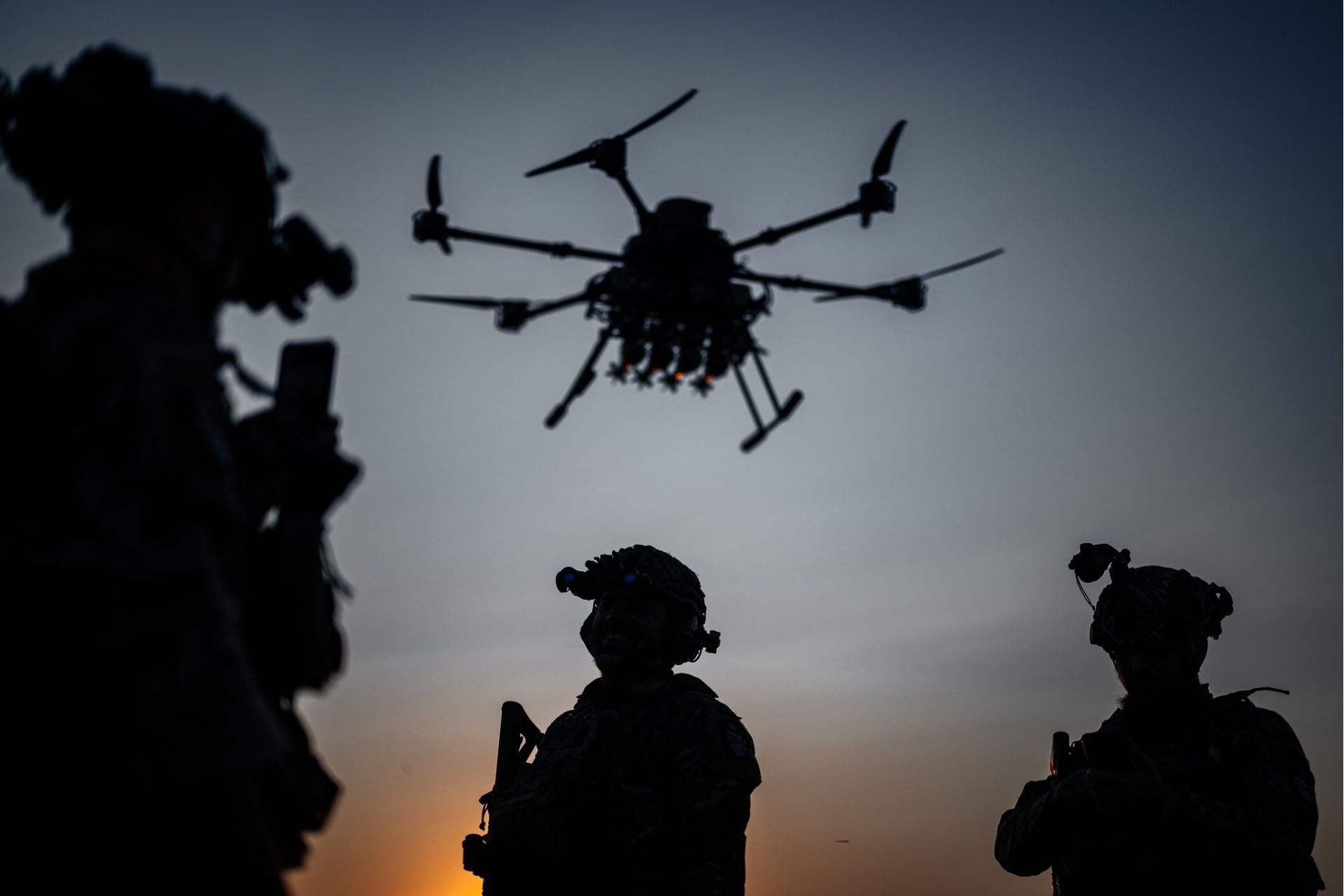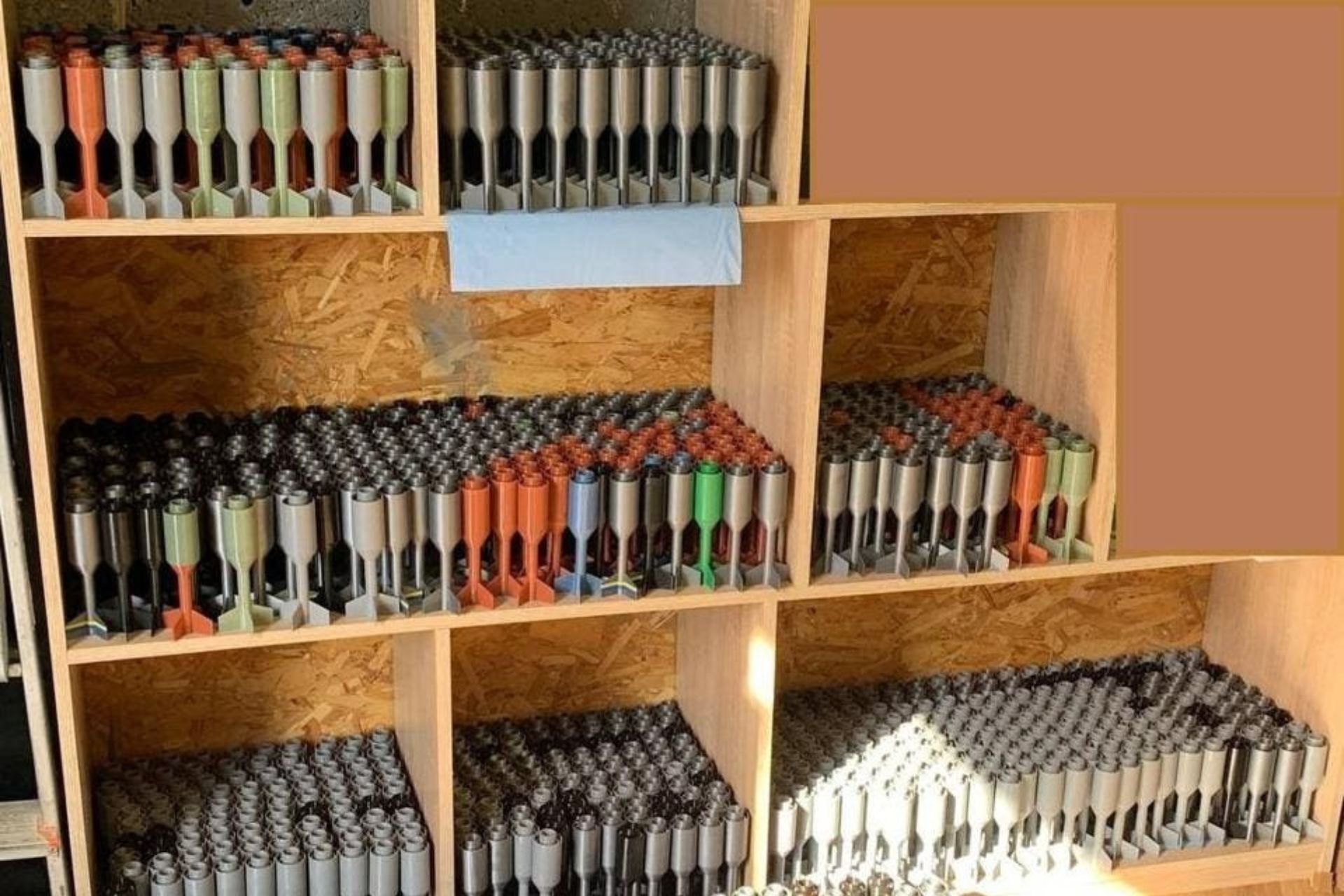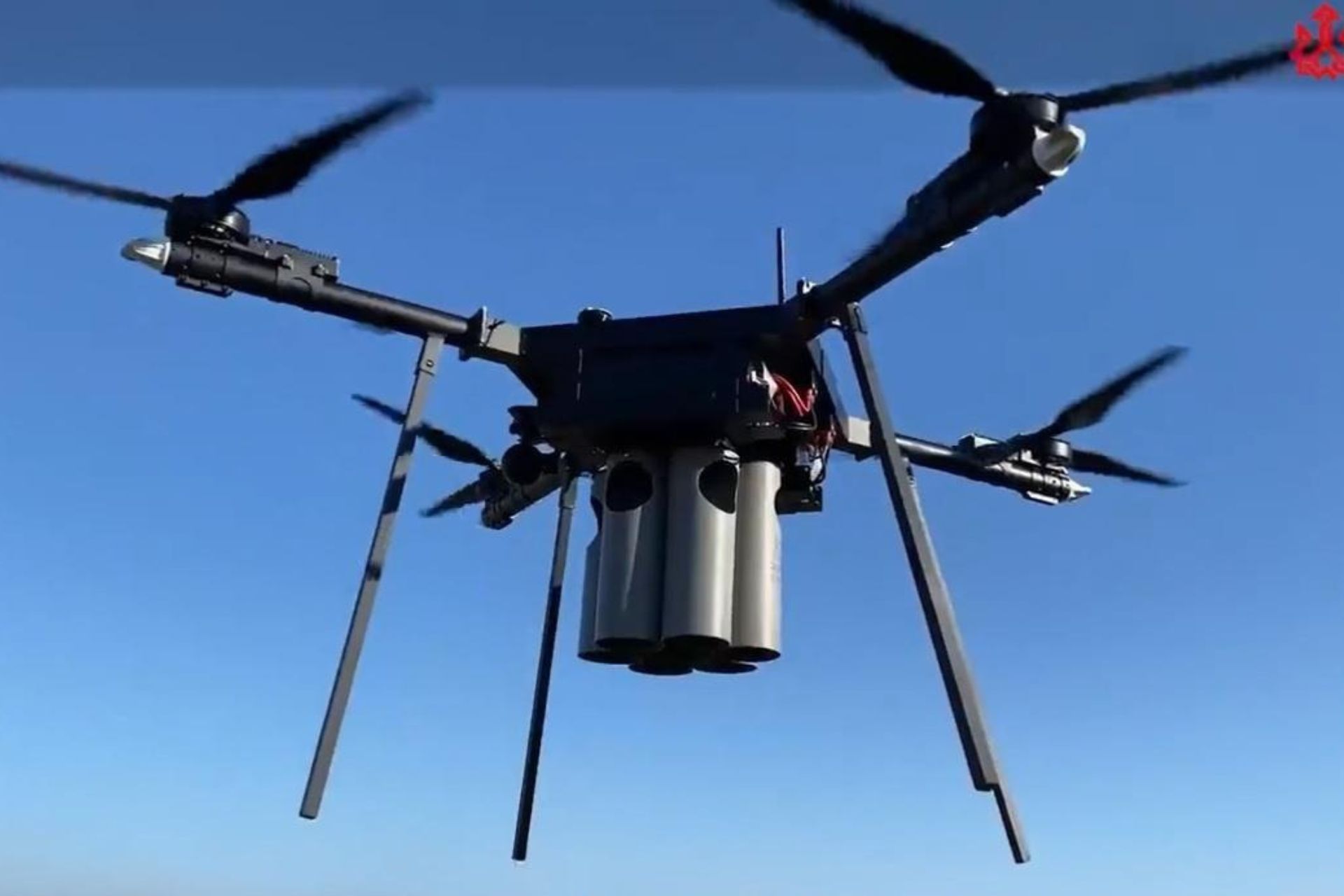Breaking News
FOCUS: Innovation on the Battlefield—How Ukraine Is Expanding Drone Munitions.
Since the beginning of 2024, Ukraine’s Ministry of Defense has codified and adopted 70 new models of munitions designed for drones. The ongoing conflict in Ukraine has highlighted the growing importance of drones, especially First Person View (FPV) drones, which have proliferated across the battlefield. The increasing use of drones in the war between Ukraine and Russia has driven the development of a wide range of specific munitions tailored to these new aerial platforms. In July 2024 alone, about 20 new types of drone munitions were codified and approved, underscoring the acceleration of these efforts. Follow Army Recognition on Google News at this link

FPV drone use in Ukraine has surged since the onset of the Russian invasion, with monthly production reaching approximately 50,000 units as of 2024. (Picture source: Ukrainian MoD)
FPV drones, often referred to as kamikaze drones, are small, remotely piloted aircraft equipped with a camera that allows operators to steer them in real-time. Their use in Ukraine has surged since the onset of the Russian invasion, with monthly production reaching around 50,000 units. These drones are primarily deployed for precision strikes against targets such as tanks, armored vehicles, and enemy positions. However, this production level remains insufficient to meet the estimated needs of the Ukrainian military, which requires approximately 200,000 FPV drones per month.
As drone usage multiplies, so too does the range of munitions deployed. FPV drones typically carry small explosive charges specifically designed to be effective against light vehicles and infantry positions. Despite their small size, these munitions have a disproportionate impact due to their precision and the ability to be guided directly to their targets.
The munitions used by Ukrainian drones vary widely in type, size, and destructive capacity. These munitions range from a few hundred grams to several kilograms in weight. Among the most common are high-explosive fragmentation munitions and shaped charges. The latter are specifically designed to penetrate the armor of enemy vehicles, making them a preferred choice for attacking Russian tanks and other armored vehicles.

FPV drones typically carry small explosive charges specifically designed to be effective against light vehicles and infantry positions (Picture source: Ukrainian MoD)
Ukrainian drones are also equipped with combined-action munitions, which blend the effects of explosions and fragmentation to maximize damage to both human and material targets. Additionally, multi-purpose munitions are increasingly used. These are versatile and can adapt to various missions, including the destruction of fortifications, vehicles, or human targets in diverse environments, including underground.
This high demand for drone munitions is partly met by startups like Steel Hornets, a private manufacturer of weapons systems for drones. Unlike traditional arms manufacturers, Steel Hornets adopts a model similar to Amazon, shipping small quantities of munitions directly to users through online orders.
Ukrainian FPV drones are often armed with repurposed RPG warheads or modified grenades, but Steel Hornets has innovated with specific munitions such as armor-piercing shaped charges and fragmentation weapons, all designed to be dropped from commercial or military drones. These munitions are sold without explosives or detonators, making them easier to ship and handle. Users then add standard military detonators and explosives, often scavenging or purchasing them separately.

Steel Hornets adopts a model similar to Amazon, shipping small quantities of munitions directly to users through online orders (Picture source: Steel Hornets)
Steel Hornets stands out for its ability to produce munitions quickly and in small batches, thanks to 3D printing and lightweight composites, allowing the company to respond swiftly to the changing needs of the battlefield.
Ukraine uses various drone models, developed by local companies as well as through international partnerships. Notable among these is the "Leleka-100," a reconnaissance drone produced by DeViRo, capable of flying up to 120 kilometers at a maximum altitude of 1,500 meters, and known for its robustness and reliability in combat conditions.
Another significant model is the "Punisher," a tactical combat drone developed by UA Dynamics. It can carry a payload of three kilograms and has a range of 45 kilometers, with the capability to strike targets with high precision. UA Dynamics produces several hundred of these drones each month. New drone models are continuously being developed, while the range of munitions for these devices expands to meet the demands of the battlefield.

Ukrainian shrapnel ammunition for dropping from FPV drones (Picture source: Steel Hornets)
The introduction of drones like the Kazhan E620, a jet-powered attack UAV capable of carrying various munitions at different altitudes, speeds, and ranges, reflects strategic investments by the Ministry of Defense in advanced drone capabilities. The expansion of the drone arsenal within Ukraine's armed forces, through the acquisition of systems like the Kazhan, highlights the country’s commitment to enhancing its defense capabilities and staying aligned with modern warfare trends.
International partnerships also play a crucial role in the development of drone capabilities in Ukraine. For example, a coalition led by Latvia and other European countries has been established to support the production and deployment of drones in Ukraine. This partnership aims to provide low-cost but high-performance drones to bolster Ukraine's military capabilities in the face of Russian aggression.
The Leleka-100 and The Kazhan E620, two Ukrainian-made UAVs (Picture source: Wikimedia/ Ukrainian Forces)




























